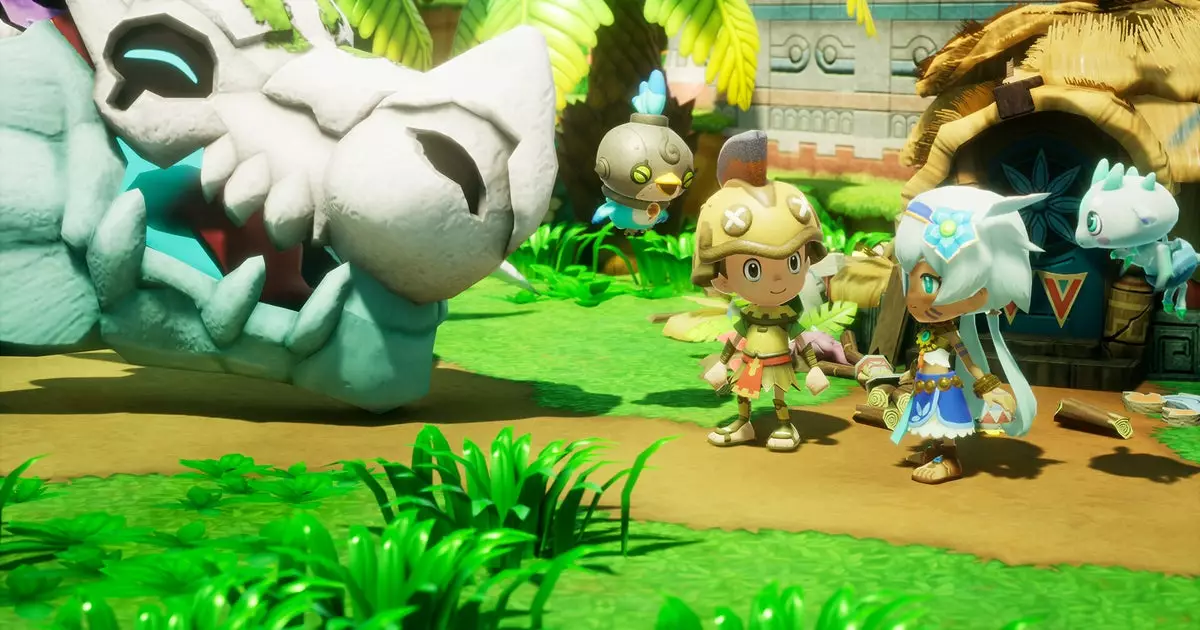Imagine a game that invites you to step into not just one role but a staggering 14 distinct lives, each bursting with unique opportunities and experiences. Welcome to *Fantasy Life i: The Girl Who Steals Time*, a fascinating “Slow Life RPG” crafted by Level-5, where players can juggle multiple professions and ambitions in a vibrant, animated realm. However, a moment of reflection reveals the deeper intent behind this abundance of choice: does living 14 lives truly create a leisurely gaming experience, or does it merely amplify the intricacies and pressures of a fantastical existence?
At first glance, the term “slow life” seems a juxtaposition within the title. It’s easy to find oneself tongue-tied, mulling over how the term aligns with traversing between 14 distinct lives. Yet, the developers have skillfully woven a concept that transcends mere class-switching, allowing players to adopt various roles such as farmers, fishers, craftspersons, and warriors. While one might be tempted to liken this to hastily swapping hats, it’s more akin to a rich tapestry where each thread contributes to an elaborate and fulfilling narrative.
Unpacking the Role Mechanics
In *Fantasy Life i*, the lives are categorized into three pivotal types: Gathering, Crafting, and Combat, each serving as a vital cog in the game’s mechanical structure. Gathering roles like farming and fishing allow for a connection with nature, enabling players to appreciate the bounty of the land. Conversely, Crafting lives such as blacksmithing and alchemy present opportunities to turn raw materials into useful items, which inherently ties into the adventure. Combat lives, on the other hand, evoke the excitement of engagement and conflict, allowing players to confront beasts and adversaries in thrilling encounters.
What’s particularly promising about this system is how brilliantly it enhances player agency. Rather than merely adhering to chosen archetypes, players can explore their interests and skills in a seamless manner, collecting resources and forging alliances along the way. Each classified life feels both intentional and rewarding, transforming the gaming experience into an exploration of desire and potential—a tracker for self-actualization.
A Blend of Adventure and Decor Aesthetics
As if the premise didn’t already promise an intriguing adventure, the narrative framework adds an engaging layer of depth. Players embark on an archaeological expedition, unearthing secrets which could potentially alter history itself. The discovery of fossilized dragons and a portal to the past introduces an epic scale to the game, yet it is undercut by an equally compelling focus on customization and decoration. Here, players are tasked not only with saving the world but also with curating their environments—akin to *Animal Crossing*, where the joy lies in expression and creation.
This duality between exploration and personal expression shines brightly in *Fantasy Life i*, blurring the lines between urgency and leisure. Faced with the task of transforming the landscape while uncovering the narrative, players can choose to embrace the whimsy of home-building or delve into the gravitas of historical quests. This nuanced contrast invites players on a journey that is far more than simply saving the world; it becomes a quest about identity and belonging.
Critical Reflections on Gaming Dynamics
However, amid this charm lies a critical reflection on the nature of gaming and our expectations. Does the allure of multiple lives steamroll over the often simplistic mechanics of story-driven experiences? While *Fantasy Life i* offers a bright and engaging interface, questions arise about the saturation of choice. In a world overloaded with possibilities, how does one find genuine selfhood in an incessant barrage of decisions? Instead of prompting players to self-explore, does it unintentionally push them to the periphery of indecisiveness?
The complexity of conveying meaningful messages while engaging players remains a challenge. While *Fantasy Life i* radiates joy and shimmering aesthetics, a lingering thought persists: how can a game maintain its depth when intertwining so many threads of narrative and interaction? The game eagerly invites players into a world of whimsy—where 14 lives exist side by side—but does it risk losing insight amidst a tapestry that is too rich?
In an age where gaming is evolving into more than mere escapism, the success of *Fantasy Life i* will rely on its ability to balance its fluff with profound content. As players prepare to immerse themselves in this newly crafted universe, they will ultimately set forth on a journey not just to save the world but also to explore the full dimensions of not only their characters but themselves.


Leave a Reply